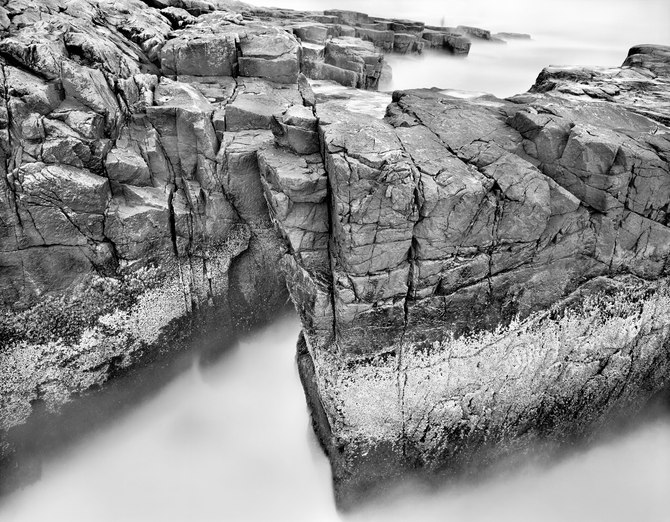Extending far seaward from Maine’s eastern coast, shifting tectonic plates and ancient erosion exposed Schoodic Point's bedrock. Granite fractured into irregular blocks, broken seams filled by molten flows that cooled into black basaltic veins.
After the last ice-age glaciers retreated, the rock shelves again rose and stabilized. Today, granite benches flank the ocean, its flat-topped terraces tilting down to the North Atlantic's edge. Attached to their walls in between the high and low tides, white acorn barnacles cleanse the water and provide food for other organisms.
The sea blackens the rock with its ceaseless ebbs and swells. This long film exposure overlayed hundreds of breaking waves, deceptively rendered as a diffuse glow. However, the experience of being there can be quite different. Geyser-like spray rinses the granite as waves break directly against the rock face. Gales and high surf have (though rarely) swept unsuspecting sightseers into the tumultuous ocean.
Historically, Schoodic Point has attracted painters to interpret its desolate beauty. In 1940, renowned modernist Marsden Hartley painted storm waves ruthlessly assaulting its headland. In an article by Carl Little (January 4, 2022), Janice Anthony said her acrylics reveal "the eternal presence of the underlying rock, defiant against the ocean waves, sheer cliffs standing unperturbed…" and oil painter Joel Babb described the promontory as "the end of the world [where] the order and structure of the earth ends at the edge of something great and different and disorderly."
- James Baker

